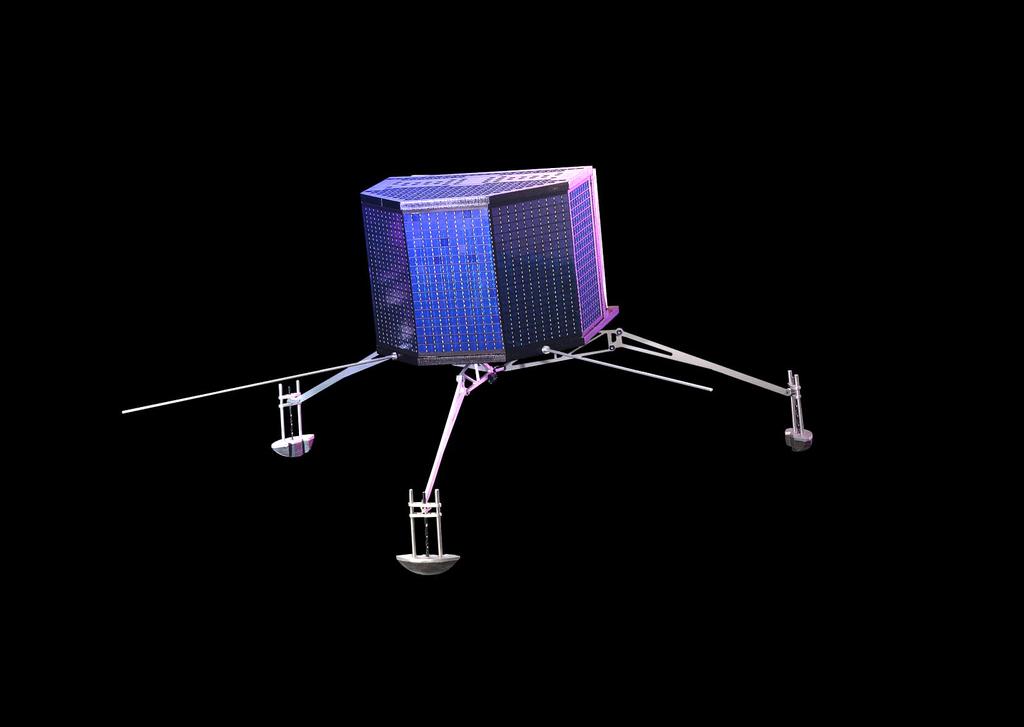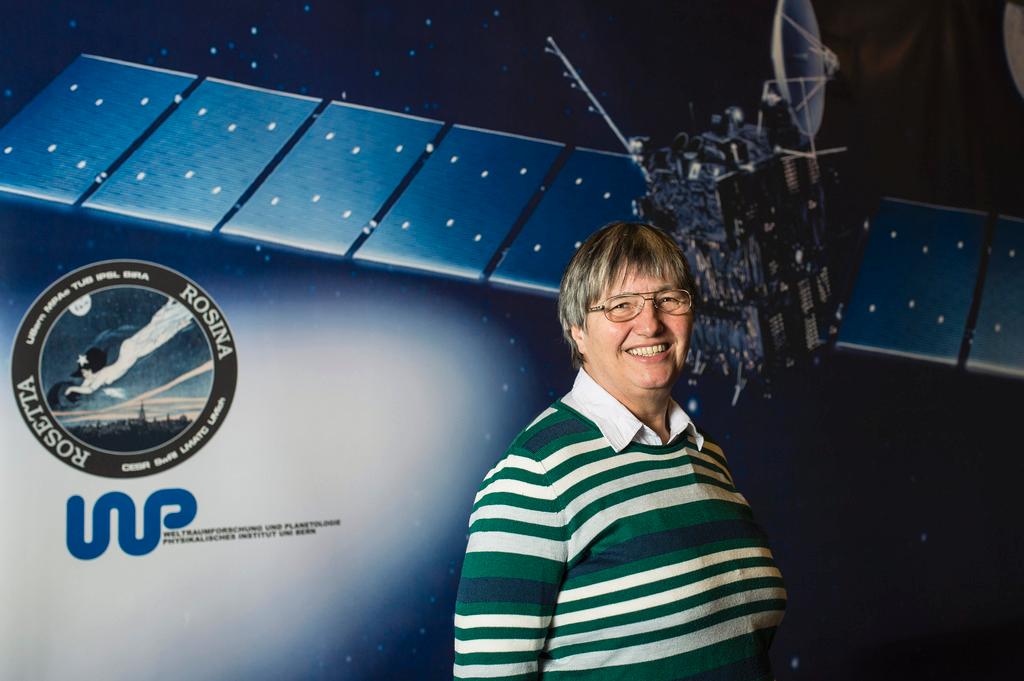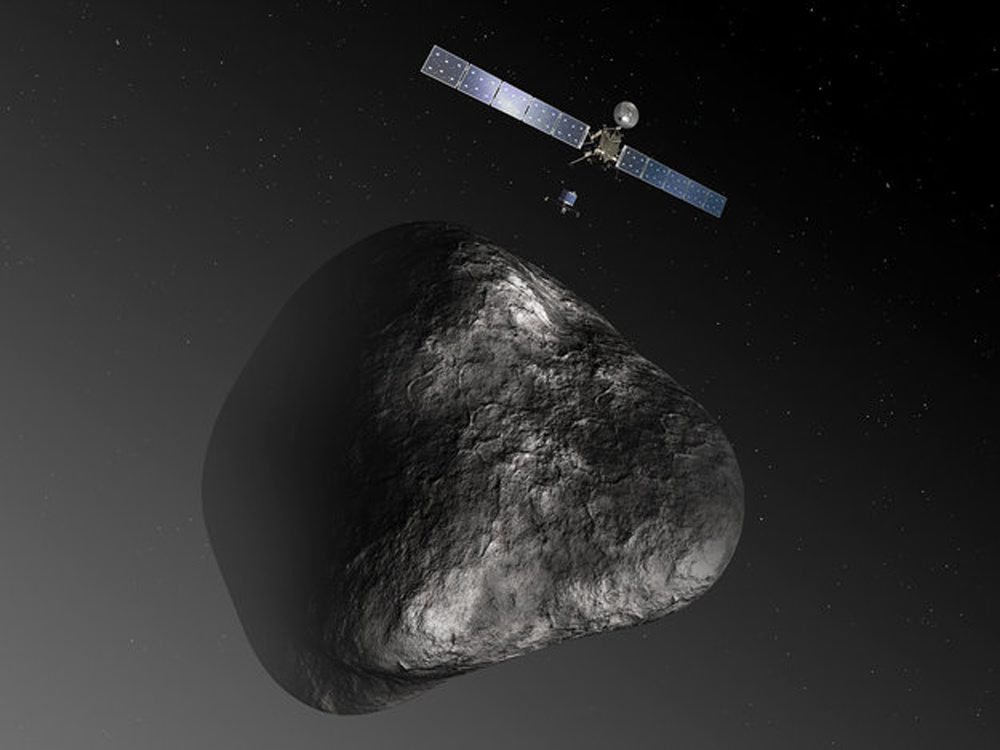Robot finally checks in from comet’s surface

After seven months of inactivity since alighting on comet “Chury” in November 2014, the robotic lander Philae has gathered enough energy to contact its orbiter spacecraft, Rosetta. Swiss collaborators are once again optimistic about collecting samples from the comet’s core.
The refrigerator-sized Philae finally managed to contact Rosetta from the surface of comet 67P/Churyumov-Gerasimenko, a.k.a. Chury, on June 13.
“I am enthusiastic and very happy, and a little bit proud,” Karsten Seiferlin told swissinfo.ch.
Seiferlin, one of about a dozen scientists at the University of Bern involved in the Rosetta mission, works on the MUPUS project (Multi-Purpose Sensors for Surface and Subsurface Science). MUPUS researchers have developed a package of sensors for gathering thermal and physical data from Chury’s surface.
Swiss scientists have been waiting for Philae to make contact, but they have been far from idle in the intervening months. Data from initial hours of the lander’s exploration have been analysed, and several publications are expected in the coming weeks. The University of Bern is also leading work on ROSINA (Rosetta Orbiter Spectrometer for Ion and Neutral Analysis), a project examining the properties of the atmosphere surrounding Chury.
Hello Earth! Can you hear me? #WakeUpPhilaeExternal link
— Philae Lander (@Philae2014) June 14, 2015External linkOnce communication and energy levels have been stabilised, the scientists will capture more images and data, including core samples from the comet’s surface – something that was not possible in November due to the inconvenient positioning of Philae’s drill.
Delicate mission
Unfortunately, although Philae landed safely on Chury last November, it ended up in a dark cranny that received very little sunlight – bad news for the solar-powered robot. However, in recent months the comet has been moving slowly closer to the sun, allowing Philae to charge it batteries.
At the moment, Philae is only able to operate as long as its solar generators can produce enough power. Next steps for data gathering will be launched once Philae has optimised its energy use, and established a consistent “dialogue” with Rosetta.
“The first thing we have to do is synchronise the orbiter, so that every time the lander wakes up and tries to make contact, the orbiter is in a position to respond,” says Seiferlin.
An eager audience on Twitter is following the lander’s progress using the hashtag #WakeUpPhilaeExternal link, but Seiferlin clarifies that this is not the first time the lander has awakened since shutting down due to lack of solar power, 60 hours after its separation from the orbiter.
“It is more correct to say that the orbiter is finally able hear Philae,” says Seiferlin.“Now, we can start planning and safeguarding the mission.”
Rosetta was initially launched over a decade ago in 2004 from the Guiana Space Centre in French Guiana. The “rendezvous with a comet” – the first mission of its kind – is being controlled by the European Space Operations Centre in Darmstadt, Germany.

In compliance with the JTI standards
More: SWI swissinfo.ch certified by the Journalism Trust Initiative











You can find an overview of ongoing debates with our journalists here . Please join us!
If you want to start a conversation about a topic raised in this article or want to report factual errors, email us at english@swissinfo.ch.